1981 Cadillac Fleetwood Brougham: Pastel Yacht
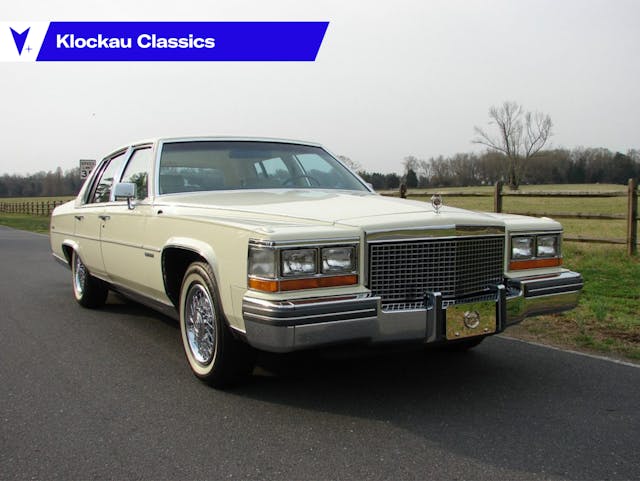
1981 was the last of the fat years for Cadillac. Oh sure, they made some really nice cars for decades after (I’d love a ’92 Seville), but 1981 and further events in that decade, if perhaps not destroying the marque as some wags and self-proclaimed ‘journalists’ may insist, definitely threw a wrench into the works.

In 1980, Cadillac still had an enviable reputation. Through most of the 1970s they still were considered the gold standard for many, despite encroachment by Mercedes-Benz. Some said they were losing their exclusiveness as they attained higher and higher production records, but they were still large, comfortable and plush, even when downsizing struck the de Ville and Fleetwood in 1977 and the Eldorado in 1979.

In 1981 there was still a lot going for Cadillac. Though the high rolling years of the ’50s through the ’70s were about to change, and it was a sharp learning curve.
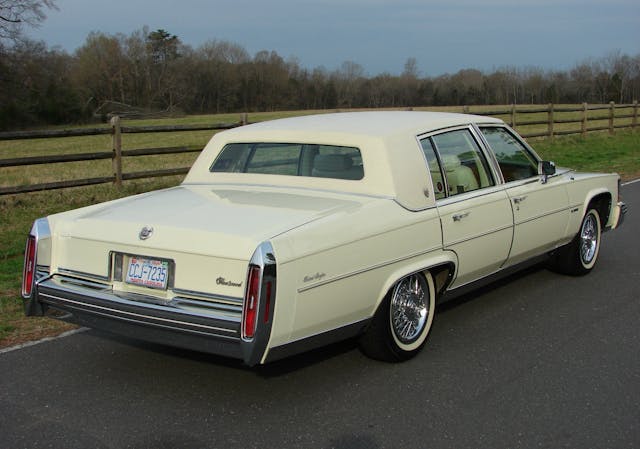
In 1979 Cadillac’s best seller was the Coupe de Ville. And although many associate these luxury yachts as the conveyances of little old men wearing hats, at that time plenty of Cadillac buyers were in their 30s. Successful real estate agents, doctors and lawyers, who today would be more likely to be driving an S-Class or 7-Series, back then were as likely as not to be piloting a Seville or Sedan de Ville.

As the ’80s dawned, Cadillac Motor Division, in trying to keep abreast of rapidly changing emissions, fuel economy standards, and new customer tastes tried to broaden their appeal, all while trying to push back the continuing onslaught of BMW, Mercedes-Benz and Jaguar. Not to mention crosstown rival Lincoln.

A rather razor-edged yet more aerodynamic redesign of the Fleetwood and De Ville series came along in 1980, plus a brand new Rolls-Royce styled bustle back Seville – Bill Mitchell’s final salvo into GM design prior to his retirement.

At the same time, however, many Baby Boomers were rejecting anything even slightly related to their parents’ tastes and lifestyle-to make their own mark, of course. The owner base of Caddy and Lincoln customers began moving from late thirties to mid-fifties. Granted, that had begun back in the ’70s when Mercedes really started to come into its own.

By the early ’80s it was the age of the 3-Series, the Cressida and the Volvo Turbo. Yuppies! Think Alex P. Keaton, or what he aspired to be on Family Ties. The Caddy owners, in contrast, were more in the Judge Smails camp. “I want a 240D.” “You’ll get nothing and like it!”
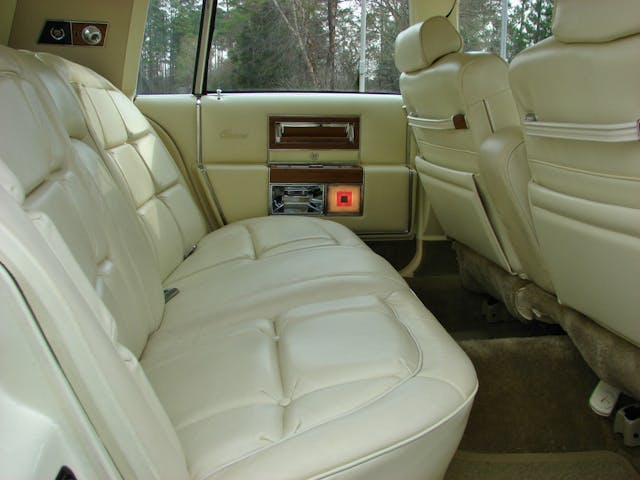
Cadillac always had been interested in new technology and tastes-the 350 Diesel became available in 1978, and starting in 1980 it was standard equipment on the razor-edged Seville. The Seville itself was pretty newfangled, a small Cadillac amongst Nimitz-class de Villes and Eldorados prior to 1977. At which point the de Ville and Fleetwood themselves became very Seville like.
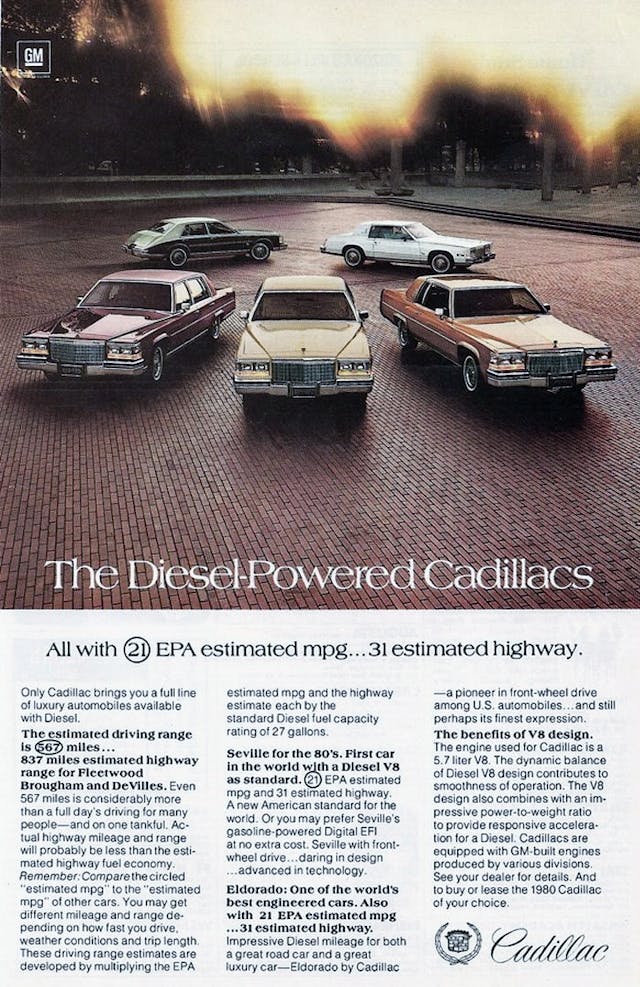
For 1981 a variable-displacement 368 V8, the infamous “V8-6-4” was added, though the 368 itself had appeared in ’80 and had the same engine architecture as the giant 472/500/425 CID V8s of yore. Fuel economy standards were going up, and as a luxury make with V8 power, Cadillac was going to have to improve efficiency, or pay increasingly fat fines.

As the brochure explained, “As you drive, any gasoline powered 1981 Cadillac with it automatically goes from 8 to 6 to 4 cylinders. This happens automatically as your power needs change…the on-board digital computer on the Digital Fuel Injection system senses the power requirements of the engine and closes off two, four or no cylinder valves, depending on those power needs. Then, as your power needs change, it opens fuel valves.” A neat feature was the MPG Sentinel on the dash, which would tell you at the touch of a button how many cylinders were currently being used.

The 1981 V8-6-4 was rated at 140 horsepower, with a 3.80 x 4.06 bore and stroke. The 350 diesel was an option on all non-limo models except the Seville, where it remained standard equipment. A 252 CID V6 was also available (again, on all models but the limos), apparently as a credit option, or for those who wanted better mileage but had zero interest in a diesel. Considering an ’81 Fleetwood Brougham sedan had a 4,250 pound curb weight, I think I’d take the mileage penalty over going with a V6, but that’s just me.
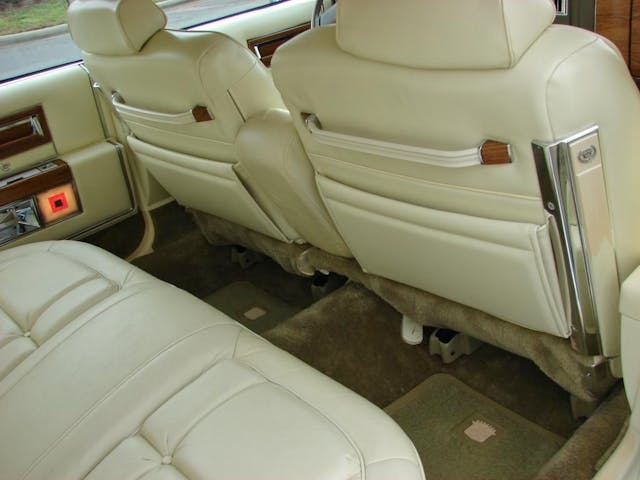
It wasn’t a bad idea. In fact, it is widely used today on new cars-at least before all this electric malarkey started getting shoved down our collective throats. But I digress. In 1981 the technology was new, and the execution of same wasn’t the best-it was a brand new technology. Teething problems resulted in trips to the dealer for many new Cadillac owners, who were not used to having their car towed.

And who weren’t overjoyed at having their car flatbedded from the country club parking lot because it wouldn’t start. Long story short, the V8-6-4 was a one-year feature only, with the exception of the Fleetwood Seventy-Five limousines, which kept the variable displacement engine through 1984. Starting in ’82, the new aluminum ‘High Technology’ V8 would replace the V8-6-4 on all models except the limousines-and the new compact Cimarron. But that’s a story for another day.

Of course, Cadillac collectors today know that the 368 V8 was a solid power choice without the extra electric rickrack added to ’81s. Today, clipping one wire means you can enjoy an ’81 Cadillac with little fuss today, but that wasn’t a very palatable option for the wealthy first owners of these cars, who expected everything installed on the car to work as it should.

This particularly fine example was spotted by your author on eBay back in 2014. The 1981 Fleetwood Brougham had an MSRP of $16,365; 31,500 were produced. I was impressed with its condition and the most excellent color combination (Waxberry Yellow, a one-year only color), and filed the photos away digitally. I have no recollection of what it sold for, and am not sure if I even checked after the auction ended, but it was a really spectacular Fleetwood Brougham. I’d drive it proudly.



Enjoyed article, these classic motorcars remind me of a time when big was beautiful when it came to luxury automobiles. Sure the youth of today look at them as parade floats or land yachts. I see them as ( in my opinion) automotive art on wheels.
My father drove Cadillacs throughout the 50s, 60s and beyond. I had a 75 Fleetwood brougham that was a true joy to drive and never gave a problem. Then a friend of mine but a 2000 DHS and that was my next experience with Cadillacs. It had problems with the OnStar engine and half of them options just didn’t work properly. It had all these functions for the heat air conditioning I suppose just because they could do it but it wasn’t well thought out and had entirely too many gimmicky cheap plastic buttons on the dashboard dashboard. It was such crappy junk that it ruined me forever on the marque. Standard of the world ? Hooey ! Bad example is more apropos.
There’s no onstar engine. Onstar is a cellular service for vehicle connection. If you’re going to make up nonsense at least get your facts straight. Stick with your kia.
What year was a Cadillac that the back lights are half red and the other half black
“Electric malarkey?” Hardly. The only people who dismiss electric cars are those who haven’t driven one.
EV’s are probably great for people that live in urban environments, rarely venture more than a few dozen miles from home and don’t mind spending time waiting for a recharge. It seems that the typical EV owner has embraced the “people-mover” concept and drive only because they have to. Yes, they can accelerate briskly, but a one-trick pony is just that. A couple of years ago, Car and Driver raced a Tesla against a stock Ford Model T from Michigan to New York. You should look that article up…